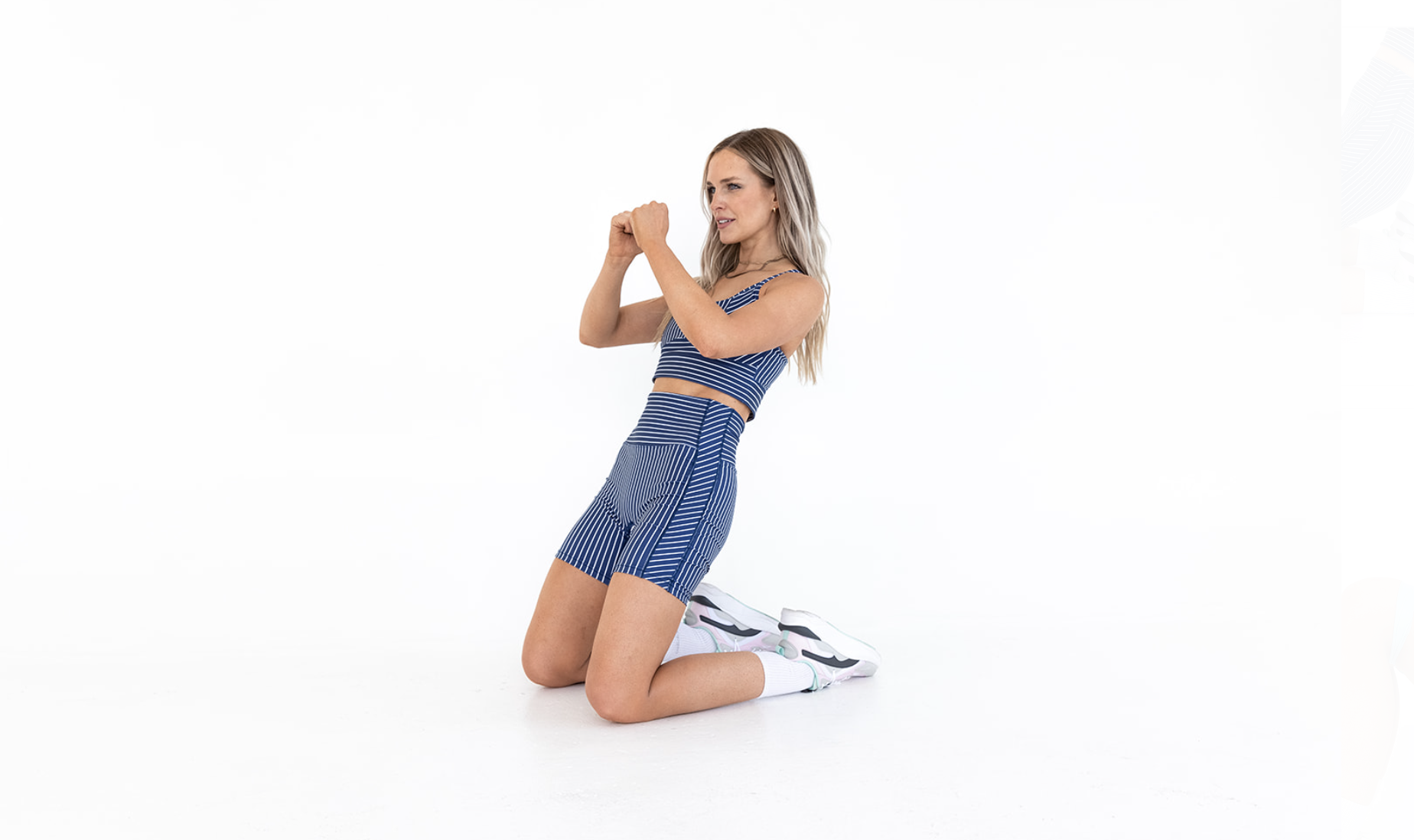Types of exercise
Recovery
Fitness myths
Evlo Programs
BODY COMPOSITION
All
Browse by category
Browse by category
Knees over toes: good or bad?
“Don’t let your knees go over your toes” has been a pervasive cue in the fitness industry for many years. In fact, both Shannon and I learned some variation of this cue in our initial fitness trainings over 10 years ago. However, we purposely place our knees over our toes almost every time we work quads in Evlo.
What’s the deal? Is this okay for the knees? What about if an exercise doesn’t feel good for your knees? Let’s dive into these questions and more in today’s post.
Is it safe for your knees to go over your toes?
Long story short: yes. The knee is a hinge joint that can flex (bend) and extend (straighten). As the knees pass over the toes they go deeper into that bending motion.
Often, this motion is not limited by the knee joint itself, but rather, the ankle joint. Specifically, ankle dorsiflexion. If your foot is flat on the ground, you will reach a natural “stopping point” of ankle range of motion as you shift the knees over the toes. If you continue to go deeper into this motion, the foot will begin to pronate (think: roll in) and the knees will begin to shift in towards midline.
This is not to say that you should then go and stretch or work on ankle mobility. This is often a natural limitation that is expected. Instead, we can take this limitation out of the equation by modifying the exercises.
Do your knees need to go over your toes?
Your knees go over your toes every single day. Any time you walk up or down the stairs or squat down to get something from the ground, your knees will cross your toes without a conscious thought. The knees need to go over your toes to move functionally throughout your day.
But what about in your exercise routine?
The knees need to cross over your toes in order to target one major muscle group: the quads.
The axis for the quads is the knee joint itself and the lever is the tibia (your larger lower leg bone). In order to make a lever more active (and therefore load a muscle more significantly), we aim to bring the lever more parallel with the ground and more perpendicular to the line of force. In this case, the line of force is gravity, a straight vertical line down to the ground.
But what about the ankle motion limitations?
Although the knees do need to pass over the toes to dynamically load the quads, that natural ankle limitation comes into play quickly in a standing exercise. This is one of the primary reasons why we utilize sissy squats to accurately target the quads.
Sissy squats
In a sissy squat, we elevate the heels to remove the ankle dorsiflexion requirements. We typically utilize two weights to stand on, but something like a wedge could be used as well. From there, you shift the knees over the toes as you lower into a squat-like position with feet hip’s distance apart. The key is to track your knees over your second and third toes to avoid the knees collapsing in or out. Remember: the knee is a hinge joint that prefers to flex and extend.
Matrix move (reverse nordic curl)
In addition to sissy squats, we often employ what we call matrix move to load the quads.
A matrix move, or reverse nordic curl, begins from a kneeling position. Keeping a stable line from the knees to the top of the head, you hinge back as one unit. Being in this kneeling position and hinging back naturally places you in a “knees-over-toes” position.
Both sissy squats and matrix significantly load the quads through emphasis of the eccentric phase of the exercise. During this phase of an exercise, the muscle lengthens while being loaded. This creates more intentional damage within the muscle tissue itself, one of the factors involved in muscle growth. Exercises that contain a significant eccentric component can also lead to more soreness. But remember that soreness does not signal that an exercise was more or less effective.
What if those exercises don’t feel good for my body?
Just because exercises like sissy squats and matrix are highly effective for the quads from a biomechanical perspective, does not mean that those exercises will feel good for your body. If someone is new to these exercises or if they’ve come from a different program that has been stressful on the body overall, these exercises can feel like too much pressure within the knees.
Enter: wall sits. Wall sits are performed with your back against the wall in a nearly 90 degrees “seated” position. They isometrically load the quads without having to dynamically move the knees over the toes. How? By using the ground reaction force.
The ground reaction force is the force that is produced equally and opposite of the force placed into the ground by your feet during a wall sit. It is Newton’s third law of physics that allows this to happen.
We cue to press the feel down and away from the wall without actually moving (make sure to be on a non-slippery surface). This creates a diagonal ground reaction force that places load through the quads. This exercise also loads and strengthens the patellar tendon that connects the quads to the lower leg. Building this resilience with wall sits prepares the body for dynamic exercises like sissy squats and matrix.
Available on:
Start for free
Join our community where you no longer need to deplete yourself to see fitness results.
